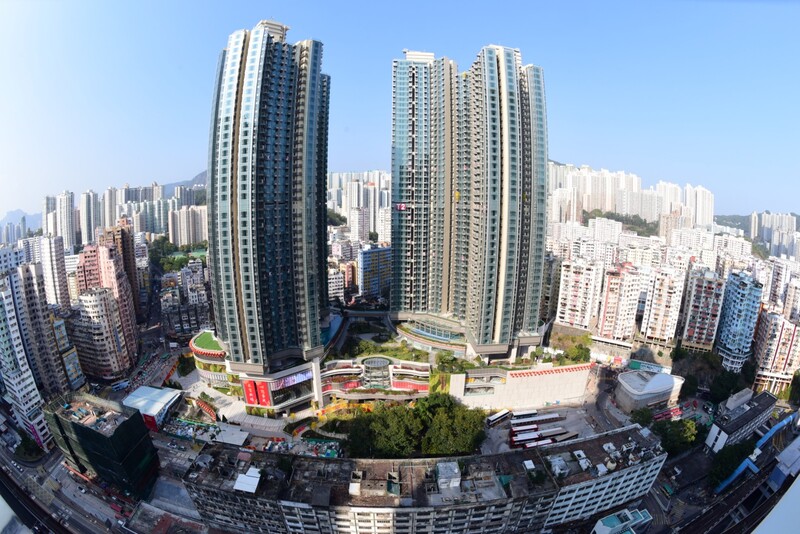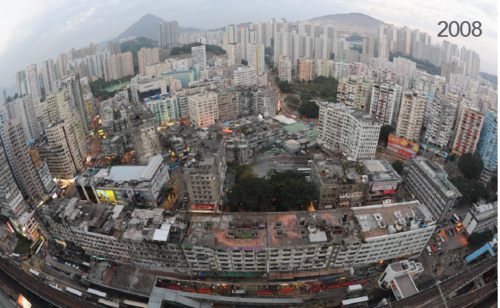Dream Comes True: The New Chapter of Kwun Tong


The Kwun Tong Town Centre Redevelopment Project (K7) is the Urban Renewal Authority’s (URA) largest undertaking ever. The project reached a major milestone with the completion of construction at Development Areas 2 and 3.The brand new Yue Man Square now boasts enhancedcommunity services and facilities, benefitting residents inKwun Tong and the surrounding areas, as well as the peoplecommuting daily to work here. The redevelopment also brought about improvements to the quality of life, givingrelief to issues associated with an aging community, suchas building and sewage system disrepair, poor sanitation,environmental concerns, road congestions, and so on.
Executive Director Eric Poon has worked for the URA for over 20 years. He has been involved with the K7 project from the very beginning, responsible for the planning, relocation, demolition, construction and inspection works. As he looks at all the progress made today, he can still recall how the team used to describe this project as only a dream - an unachievable daydream. Now, in retrospect, he is convinced that perseverance and persistence will make dreams come true, regardless of the challenges posed.
The project was first announced in 1998 by the URA’s predecessor, the Land Development Corporation, with the aim of completely renewing the old district through large-scale planning and redevelopment. With a site area of more than 5.3 hectares, the project faced three major obstacles - demolition, resettlement and reconstruction. In order to take on these challenges, the URA made detailed implementation plans at the early stages of planning. Over the eight-year construction period, the team encountered, and overcame, countless challenges.
Unlike other redevelopment projects initiated by the URA, the K7 project adopted a macro district planning approach from the very beginning, re-integrating and planning for everything within the site, such as the traffic network, community facilities, and commercial and residential developments. The purpose of the planning-led approach was to bring about tangible benefits to the whole community. Eric points out that all community facilities are retained after the redevelopment, “We preserve the bus stops, minibus stops, trees, hawker markets, government clinic, and so on. We also substantially improve the surrounding environment,” he said. Eric is happy to see the way the redevelopment ushers in better facilities for the community, and makes him truly appreciate the important role urban renewal plays in the society as a whole.
Throughout the 20 years of redevelopment work, Eric finds the relocation of a banyan tree in the old Yuet Wah Street bus terminus his most unforgettable task. “Kwun Tong is like this banyan tree, which was growing on a slope. As its habitat deteriorates with no mitigating measures, the tree will eventually topple in five or ten years’ time. The same goes for Kwun Tong. Increasing demands due to population growth and economic development are exerting pressure far exceeding the existing capacity of various facilities in this ageing community. Moreover, old buildings that are not properly maintained or repaired will eventually fall into disrepair and no longer be suitable for residents to live in,” Eric said.
After more than six months of discussions and studies with the joint developer, contractors, and tree experts, temporary tracks were laid to relocate this 300-ton banyan tree to its new home at Yuet Wah Street Playground, 70 metres away from its original location. It is growing well and continues to oversee the development of Kwun Tong.
Works for the remaining Development Areas 4 and 5 of the project will commence soon. Other than office and hotel towers, there will be a number of community facilities, including a leisure and green space of more than 10,000 square metres, an oval-shaped landmark building, and a public square. In addition, the 24-hour public passageway in Yue Man Square Shopping Mall will be extended and connected all the way to the MTR Kwun Tong Station. Construction works are scheduled to complete in 2030.
